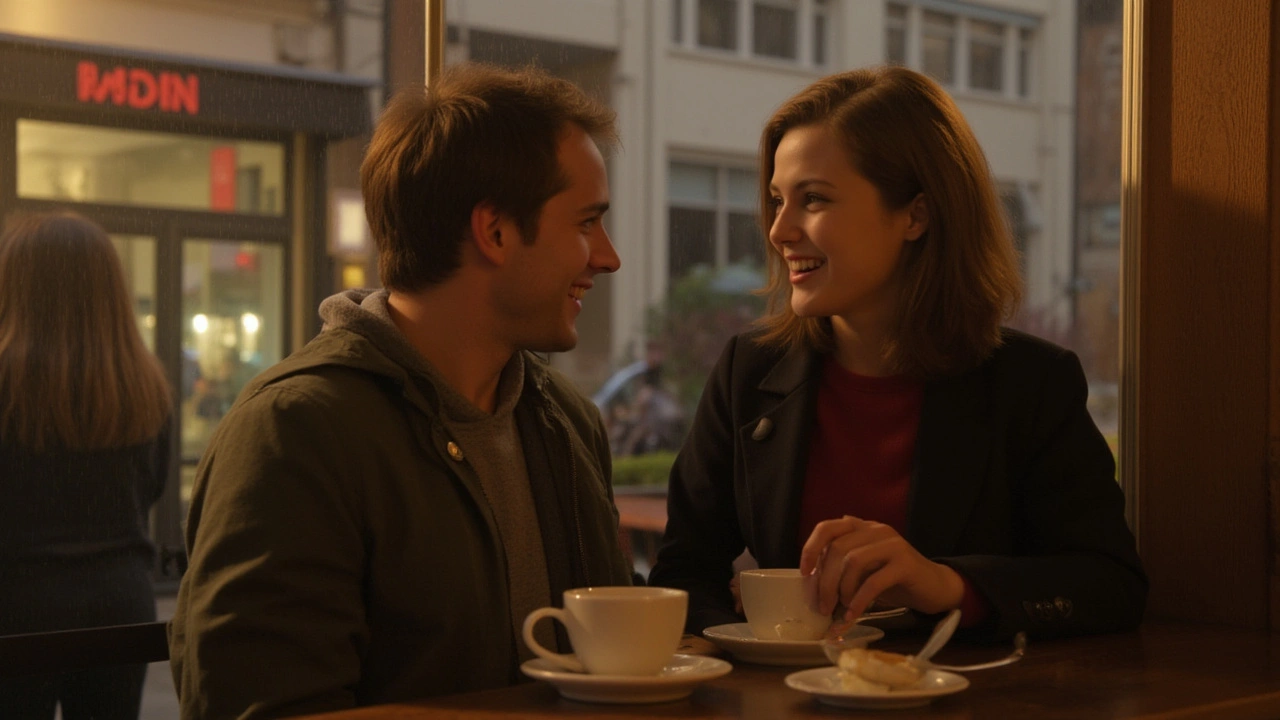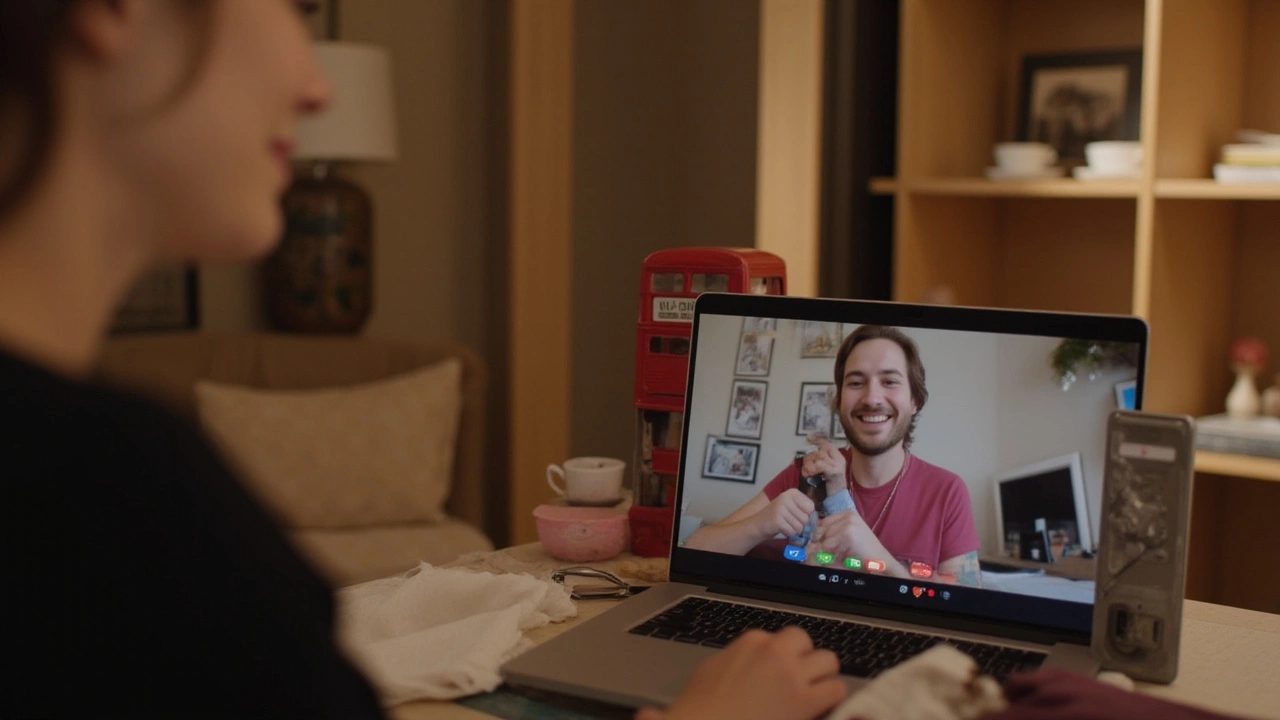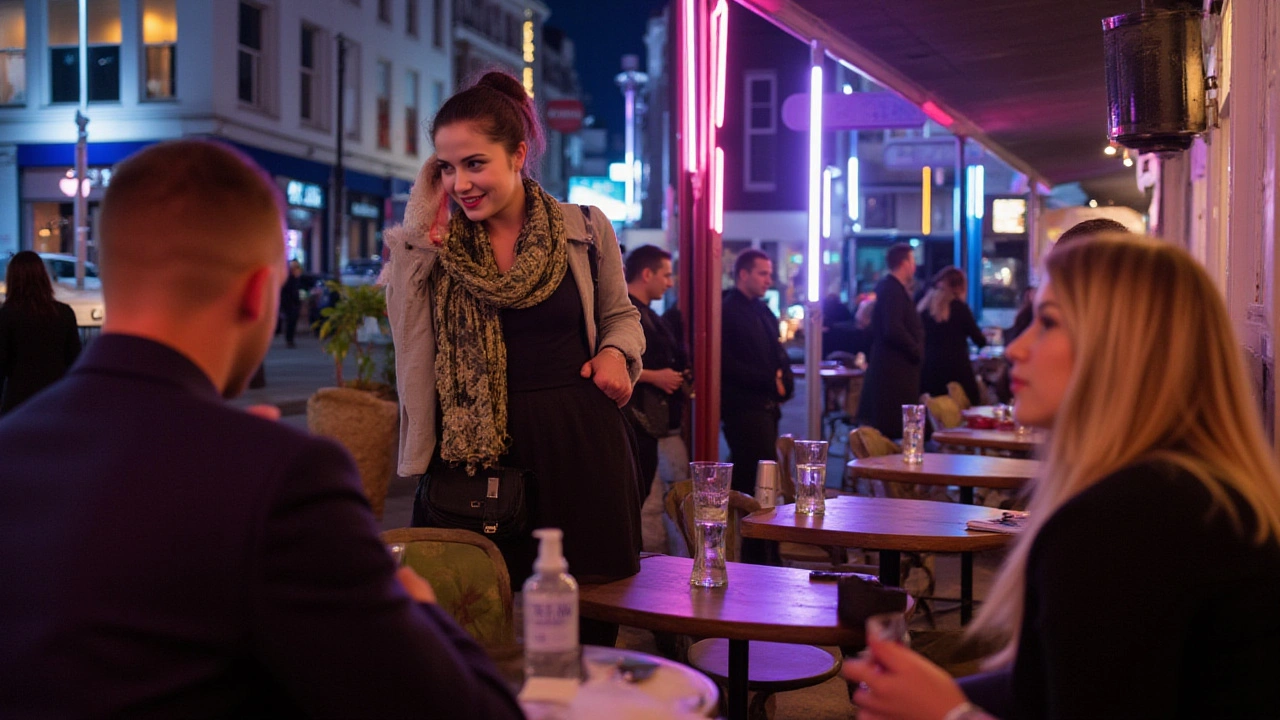What Is GFE? All You Need to Know About the Girlfriend Experience

Imagine paying for a date, and instead of something cold or transactional, you get flirty texts, sweet check-ins, and real conversations. The Girlfriend Experience, or GFE, is exactly that—a blend of emotional warmth and connection that blurs the lines between professional service and real romance. People are no longer just after the physical; they’re seeking the good-morning messages, inside jokes, and cozy vibes that come with meaningful relationships—even if it’s just for an hour or through a screen. It’s wild how often GFE gets searched these days, especially with so many people feeling more isolated and craving human connection. Whether you’ve heard whispers about it on forums or saw it pop up in digital dating ads, GFE is way more layered than most realize.
GFE Meaning: What Does It Really Stand For?
GFE stands for “Girlfriend Experience.” Simple, right? But if you ask around, you’ll find the meaning can shift depending on who you’re talking to and where the conversation happens. Originally, the term started popping up in escort ads to describe services that go beyond plain physical interaction—think cuddles, conversations, genuine laughter, even holding hands. Instead of just a wham-bam setup, GFE makes things feel like a real date with emotional vibes, not just sexual ones.
In today’s dating world and online spaces, GFE is part of everyday slang. You might stumble onto it in subreddits, Twitter threads, or dating site bios where the term signals something more authentic, comforting, and personal. People use "GFE" to describe an arrangement where things feel natural, like the beginning of a real romance. It’s about more than just sex—it’s about emotional connection, attention, and a sense of togetherness, even if it’s all make-believe.
Slang-wise, when someone says “I’m giving GFE,” they mean they’re bringing all the girlfriend energy to the situation: texting goodnight, cheering you up after a long day, and keeping the conversation flowing during and between visits. It’s the mainstreaming of GFE that’s made it such a popular shorthand, with people looking for more than just hookups. In social circles, GFE even gets used playfully among friends joking about someone’s nurturing or affectionate vibe.
What’s Included in a GFE?
People usually assume that GFE is just about getting some action, but—plot twist—it’s more about the softer stuff. A classic Girlfriend Experience involves deep chats, binge-watching your favorite shows, and those honest, flirty jokes that make you feel seen. Think of it as the opposite of cold, transactional meetings. Eye contact, smiles, inside jokes, thoughtful questions—these are what set GFE apart.
Here’s the thing: GFE isn’t really about a checklist, but there are some common themes people expect. Expect tender gestures, whether that’s holding hands at dinner, gentle massage, or being a patient listener. While it may involve sex, what really stands out is the sense of closeness and chemistry. There’s attention to detail—remembering your favorite coffee, checking in after an important day—that makes the experience feel less "service" and more like actual dating.
One fun detail? Some people want the full relationship illusion, including good-morning and goodnight messages, pet names, or even regular date nights. On platforms like Reddit or escort review sites, providers describe sending texts that mimic real relationships—even getting movie recommendations or sharing memes. If you’ve ever read a firsthand account about what is gfe, the real kicker is that emotional involvement often carries as much weight as any physical interaction.
The Girlfriend Experience: Emotional vs Physical Aspects
Let’s face it, you can get touch anywhere. What makes GFE a whole thing is the emotional part—the stuff that gives it heart. It’s all about making you feel like you matter, even if it’s just an act. Emotional presence means you’re actually listened to and responded to, not just talked at. People offering GFE often go out of their way to remember things about you, echo back your feelings, and respond with empathy, which adds a serious layer of comfort and trust.
On the physical side, sure, there’s hand-holding, cuddling, kisses on the forehead—anything you might get from someone you’re dating. But it’s the mix that makes it unique. If one part is missing, the other can feel hollow. A study published in 2023 looked at emotional fulfillment among people using companionship services and found that having both emotional and physical presence, even short-term, promotes lasting feelings of acceptance and boosts self-esteem.
Here’s a tip for anyone considering GFE: if you want it to feel authentic, lean into the emotional signals—ask open-ended questions, make eye contact, mirror comfort cues. You can get physical touch anywhere, but the emotional tune-in is what keeps people coming back for more.
GFE Description in Real Life and Online
There’s a big difference between booking a face-to-face GFE and buying the digital version. In real life, the experience is built around shared environments—walks, coffee dates, holding hands, meals with laughter and eye contact. Real-life GFE often involves spontaneous, unscripted moments, small touches, whispered jokes, and natural chemistry (or the artful illusion of it!).
Online GFE (including virtual girlfriend services and text-based chatting) tries to transplant this experience into messages, video calls, emojis, and photo swaps. People use voice notes, stream together, or even play games online to keep things fun and intimate. The difference here? Every gesture is digital, so emotions and attention need to be dialed up to compensate for the missing physical contact.
If you hang out on subreddit threads like GFE, you’ll notice people saying that online GFE can be even more emotionally intense, since text and imagination fill in the blanks. Providers sometimes tailor daily check-ins, custom playlists, video love notes, or even personalized digital gifts, so the recipient feels truly special. Of course, both versions have their own risks and rewards. While it’s easier for things to get lost in translation online, some find the anonymity freeing and less intimidating.
What Is the Difference Between GFE and PFE?
If you’ve ever compared GFE to PFE (Pornstar Experience), you’ll spot a major difference in tone and intent. GFE is all about connection—conversations, closeness, a play-acted version of romance. PFE, by contrast, is more about fantasy fulfillment in the explicit realm: intense, sometimes emotionally detached, and focused on high-energy physical acts you might see in porn.
In GFE, the bedroom is just one piece of the puzzle. In PFE, it’s the entire show. GFE tends to include tender moments and aftercare, while PFE dials up the performance, with less emphasis on cuddling or real conversation. GFE is for those chasing the butterflies and comfort of “having someone,” even for a night. PFE is about going hard on fantasy, pushing boundaries, or enacting specific adult scenes.
Clients often know what they’re looking for before reaching out—a warm chat and close embrace, or raw, explicit action. Service menus usually make these options clear, so there’s no confusion. If you want both, some providers even blend experiences, but it’s good etiquette to be up front about what you’re after.
Is GFE Always About Sex?
Not even close. This is probably the most misunderstood thing about the Girlfriend Experience. At its core, GFE is about closeness, presence, and the illusion of romance. Sometimes, there’s full sexual contact, but plenty of sessions just focus on hands-on affection, listening, and genuine conversation. Clients who are lonely or going through a rough patch might book GFE just for the emotional lift and sense of being cared for. Others are looking for giggles over dinner or a friend to share stories with, without anything physical.
The most requested activities outside sex? Cuddling, slow dancing, dinner dates, texting, and shared hobbies. This emotional labor shouldn’t be underestimated—many GFE providers spend hours texting, sharing playlists, or talking about clients’ hopes, just to boost their spirits. It may involve a lot of open-hearted chat and supportive listening—there’s even a spike in GFE bookings around major holidays and after big breakups, when the comfort factor is extra needed.
Most ads specify "non-sexual GFE" if there’s no physical contact allowed, just so everyone’s clear on boundaries. Emotional-only arrangements are surprisingly popular, especially in regions where physical encounters are legally risky or culturally taboo.
What Is Allowed in a Typical GFE?
Each Girlfriend Experience comes with its own set of rules, which are always discussed beforehand. Some things almost always make the cut—cuddling, deep conversation, soft kisses, holding hands, and photo sharing. Others, like public affection or video calls, depend on comfort levels and privacy concerns.
Boundaries are a big deal. Most providers are clear about what’s off-limits, whether it’s unprotected sex, certain explicit acts, or meeting friends and family. Some may have special requests—like celebrating milestones, sending video messages, or even planning online "movie nights." It’s not unusual for there to be little rituals—good-morning texts, a cup of coffee, or talking each other through a bad day.
What keeps GFE feeling real, even if it’s just an act, is how both parties respect those boundaries and talk about needs openly. Some providers offer a review process after each session, so everyone’s on the same page and feels safe going forward.
Online GFE and Virtual Girlfriend Services
The explosion of dating apps and chat-based services has made online GFE huge. Now, instead of booking a face-to-face meetup, people subscribe to virtual girlfriend experiences on platforms ranging from OnlyFans to bespoke chat apps. You’ll find digital GFE in DMs, text messages, video calls, voice notes, and sometimes augmented reality spaces where avatars hang out together.
What do users get? Daily good-morning and goodnight texts, deep chats, memes, cute selfies, surprise audio messages, dating advice, and regular emotional support. Some virtual GFE providers offer full schedules: you can pre-book video “date nights,” wake up to personalized affirmations, or get cheered on before big events.
One quirky trend: people in long-distance relationships sometimes "outsource" emotional support to virtual girlfriends, especially if their partner is away for work or on deployment. The key to good online GFE is regular, meaningful, two-way communication. Some providers send surprise snail-mail gifts, playlists, or even digital drawings to keep things fresh and new.
Monthly GFE and Subscription Models
Online GFE isn’t just a one-off purchase anymore. Monthly subscriptions are everywhere, and they come with a promise of consistent support, 24/7 texting, and a sense of “being taken care of” over time. Think of it as virtual dating on demand: one-on-one check-ins every day, voice notes at night, weekly video calls, and a growing library of shared inside jokes and memories.
Many platforms now offer tiered plans—basic includes a few messages a day, while premium can mean full video dates, on-the-fly phone support, and even priority access (like being able to chat first thing in the morning). These plans are marketed as ways to fight loneliness, boost self-esteem, and offer a safe space for people to talk about anything—work stress, breakups, dreams, or daily frustrations.
The big perk? You know someone’s always there. Subscribers report feeling less alone, more productive, and even more confident about themselves, since much of GFE involves genuine encouragement and emotional validation. Providers say steady clients build more detailed, realistic backstories and inside jokes, almost mirroring real relationships—but with built-in boundaries that keep it safe for everyone.

What Are the Benefits of a Girlfriend Experience?
People book GFE for all kinds of reasons—loneliness, curiosity, social anxiety, or just a craving for connection in a world that can feel pretty isolating. Psychologists point out that humans are social creatures; we literally get a dopamine rush from feeling cared about. GFE taps into that same need, whether it’s through snuggling on a couch or a perfectly-timed text.
Clients often leave happier and lighter. Even a short GFE session can give people more confidence to face the next day, or just a reason to smile. Emotional and social loneliness drop—a 2024 survey found that long-term GFE clients reported better mood stability and more calmness when dealing with everyday stress. For providers, GFE’s structure can be rewarding, too; there’s emotional honesty, plus mutual respect and boundaries that make each session comfortable.
There’s more: people dealing with chronic illness, long-distance relationships, or big life moves sometimes turn to GFE for emotional reassurance. The right kind of GFE can break up isolation, build basic trust skills, and encourage healthier social patterns—especially for those who struggle to make connections the traditional way.
How GFE Differs from a Real Relationship
This is where things get tricky. The Girlfriend Experience feels authentic, but it’s still a performance, a negotiated space with set rules. Real relationships aren’t timed, paid, or so clearly defined. In GFE, both sides know the boundaries—and when the clock runs out, so does the illusion.
Biggest difference? Real relationships have shared history, vulnerability, arguments, and mistakes—plus the potential for things to get messy, even boring. GFE provides the comforting high points of a romance, without the drama or risk. There’s less emotional unpredictability, more safety, and a clean exit every time.
Some people try to blur the lines, letting feelings spill over, but the best GFE practitioners keep it pro by gently redirecting or clarifying boundaries when clients want more than what’s on the table. It’s about caring, not codependence.
GFE in Slang and Dating Culture
GFE has snuck its way into dating culture and online slang. These days, you might hear someone say, “I want GFE, not just PnP (party and play)” or “I’m looking for GFE on this app.” This signals a desire for emotional warmth, not just another hookup. On Twitter, guys sometimes joke, “Who’s giving out GFE energy today?”—it’s shorthand for anyone who’s being extra sweet or nurturing.
On apps and chatrooms, some users tag their bios with “offering GFE” or ask for it directly in DMs. It’s a fun way to say you’re here for a deeper, less transactional vibe. Beyond sex work spaces, GFE is now part of the broader matchmaking and cam-chat world, where performers use it to differentiate from more hardcore, fantasy-based offerings.
Special interest forums share advice and reviews, and even mainstream dating articles break down “How to find GFE energy” in potential matches. It’s not going away—if anything, the digital dating crowd has made it even more popular among people craving genuine connection.
What Is the Girlfriend Activation Technique?
If you’ve spent time in self-help or dating-advice corners of the internet, you may have seen the “Girlfriend Activation Technique” pop up. It’s a pick-up and relationship-building course that promises to teach men how to “trigger” emotional attraction in women so they’ll want to be the girlfriend. The technique covers stuff like building curiosity, using certain types of flirty talk, and creating the feeling of connection quickly.
While some people find value in these programs for learning social skills or general confidence, critics say it’s often more about selling fantasy than building actual connection. Still, it’s incredibly popular, and you’ll find plenty of guys swapping stories about how well (or badly) it worked for them on Reddit and YouTube.
This technique is not GFE itself, but it’s tied to the same desire for real, two-way relationships—just spun for the self-improvement crowd instead of professional services.
How to Tell If a GFE Is Genuine
With so many GFE options out there, how do you spot the real deal? A genuine GFE feels attentive, not rushed. You don’t just get canned responses or one-sided chit-chat; there’s real listening, warmth, and interest in what you say. If your provider remembers details, picks up on your moods, and adapts to your energy, you’re probably experiencing the real thing.
Fake GFE often shows up in scripted messages, delayed responses, or “one-size-fits-all” affection. If everything feels mechanical, if questions go unanswered, or if the emotional tone stays flat, it might be time to move on. The best signs of authenticity? Mirrored body language, custom jokes, empathy, and a respectful check-in before and after sessions.
Genuine GFE doesn’t break boundaries, but it also won’t make you feel like a number. Both parties should feel safe, valued, and seen—because at the end of the day, that’s what people really want from any kind of relationship, paid or not.
GFE vs Boyfriend Experience: Key Differences
Flip the script: instead of GFE, what if you want the Boyfriend Experience (BFE)? BFE and GFE are basically parallel services, just tailored for different clients. BFE is about being nurtured, protected, and sometimes spoiled rather than courted. The emotional goals are similar—intimacy and connection—but the methods may focus more on giving advice, playful teasing, or acts of service.
BFE often offers more direct or “masculine” styles of support—helping fix things, sending thoughtful gifts, planning dates, offering emotional validation or encouragement that has a protective or reassuring vibe. Some couples even combine both for a shared date night where everyone feels cared for. If you’ve ever wanted company and encouragement, or just to feel like someone’s in your corner, BFE is the counterpart to GFE.
Both rely on strong boundaries, clear communication, and the right emotional cues. Whether it’s GFE or BFE, what matters most is the sense of safety, respect, and personalized attention.
Can Couples Have a GFE Together?
Yes, couples can totally enjoy GFE together. In fact, polyamorous and open relationships sometimes bring in a "girlfriend" figure for shared experiences—think movie nights, coffee runs, or group dates. The idea is to enjoy the same warmth, attention, and excitement everyone craves from a new romance, but with negotiated boundaries and clear communication.
Most providers who offer couples GFE are careful to talk through consent and comfort for all involved. Some couples use it to add novelty or intimacy, while others just want a fresh friend to join the squad for a while. In any case, the best sessions focus on making everyone feel included and special, without leaving anyone out or uncomfortable.
There’s a growing trend toward "throuple dates"—GFE for two partners at once, either in person or virtually. This isn’t about replacing what’s already there; it’s about adding a new dynamic that spices up the relationship, with all the safety nets and ground rules people need to feel secure.
Glossary: BB, CIM, BBJ, DT, FS, HHR & More
- BB: Common shorthand referring to no-barrier intimacy in certain contexts.
- CIM: Discreet term used to describe a specific type of session conclusion.
- BBJ: Indicates a service performed without protective barriers, typically in coded listings.
- DT: Often refers to an advanced oral technique in adult-oriented discussions.
- FS: Full Service — implies the inclusion of a complete range of options during a session.
- HHR: Half-Hour Rate — standard pricing for a 30-minute appointment.
- FT: Typically means FaceTime in texting, though meanings can vary by context.
- OWO: A common abbreviation suggesting no-barrier interaction during certain activities.
- Monthly GFE: A subscription-based format offering regular connection and personalized attention.
- Girlfriend Activation Technique: A dating framework aimed at building emotional connection.
- Girlfie: A fun slang term for a selfie sent by or taken with a girlfriend figure.
FAQ – The Girlfriend Experience Explained
What is the meaning of GFE?
GFE stands for "Girlfriend Experience" — a style of companionship that focuses on emotional connection, attentiveness, and the overall feeling of being cared for, similar to a romantic relationship. It can be in-person or virtual and often includes warm communication and personal interaction.
What is the difference between GFE and PFE?
GFE emphasizes natural bonding, empathy, and relaxed companionship, while PFE (often called "performance-style") is centered more on high-energy fantasy and role-specific interactions. GFE is conversational and affectionate; PFE is usually more role-driven and structured.
What does BBJ mean?
This abbreviation is used in certain online listings to indicate a particular style of service involving no protective barrier. It’s considered coded language and varies by region or platform policies.
What does DT mean?
DT commonly refers to a type of technique mentioned in adult-oriented slang. It typically describes an advanced or immersive form of interaction, but interpretations may vary.
What does FS mean?
FS stands for "Full Service" and usually indicates a complete session that includes a wide range of companion-style elements. The specifics should always be clarified between the parties involved.
What does HHR mean?
HHR means "Half-Hour Rate" — a standard time-based format for a 30-minute meeting or session. It's often used as a pricing or scheduling reference.
What does FT mean in text?
FT usually stands for FaceTime, referring to Apple's video call feature. However, the meaning may shift based on the conversation context or platform.
What does BB mean?
BB is short for "Bareback" in some circles — a term associated with no-barrier contact. Due to safety and platform guidelines, this is often used discreetly or with caution.
What does CIM mean?
CIM is a term used in coded adult slang to refer to a specific way a session might end. It's best understood in context and may not be openly listed on all platforms.
What does OWO mean?
OWO stands for "Oral Without" — referring to a service provided without standard barriers. It’s commonly abbreviated in listings but should always be clarified beforehand.
What is monthly GFE?
This refers to an ongoing arrangement where someone receives consistent attention, check-ins, messages, or virtual interaction from a companion figure. It's structured like a subscription, offering emotional presence and companionship over time.
What is the Girlfriend Activation Technique?
A concept from dating and self-improvement communities, this method aims to teach ways to build emotional interest and rapport. It's typically marketed to men looking to strengthen attraction in early relationship stages.
What does girlfie mean?
"Girlfie" is a casual or playful term for a selfie taken by or with a girlfriend. It’s used often on social media or in messaging apps.
Can a couple have a girlfriend?
Yes, in open or polyamorous relationships, some couples may form connections with a third partner. This setup focuses on communication, consent, and mutual comfort across all participants.
How to turn off the GFE overlay?
In software or gaming environments, “GFE overlay” refers to a graphical display tool unrelated to the Girlfriend Experience. To turn it off, go to your system or app’s display settings and toggle the overlay feature.


